Shadrach, InnaShack and AwayWeGo
Haddam Google Maps Location
May 2009
The singular Dr. Joseph Zaientz passed away in March of 2023, but his beloved Shad Museum will continue. The building was moved to the grounds of the Haddam Historical Society and will continue on into the future. It lost a lot of its personality with the passing of Dr. Zaientz, but is certainly still worth a visit.
I have so much to say about this little museum, I don’t know where to begin. How about I start simple with the following fact: The American shad (Alosa sapidissima) is Connecticut’s state fish. Longtime readers of CTMQ probably already knew that. I’ve mentioned it here and there on various pages. Shad was the most important fish to the state for many, many years. Which reminds me… And since this is MY website and not yours, I’m entitled to go off on a random tangent in the first paragraph of a post. I used to think Connecticut went a little overboard with our state designations. Out of curiosity, I decided to see if other states have state fish. Indeed, they do (not all of them, but many).
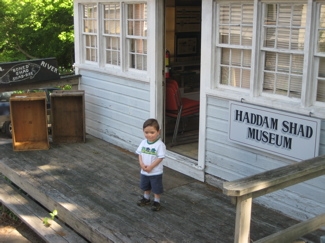
I checked out my birth state of Delaware and got a good chuckle out of their state fish: The Weakfish. Haha, that’s weak. But then I poked around some more and found that Delaware also has a state marine animal (horseshoe crab), a State Soil (Greenwich Loam), a state beverage (milk), a state dessert (peach pie… Mmm peach pie…), a state star (just some random star), and my favorite, a state macroinvertebrate (the stonefly). So I will never make fun of my current state about this stuff from here on out.
I’m glad to see our elected representatives taking time out of their busy 100 days of work per year to designate these things. In fact, I just found an excellent 2003 New York Times article about the great state fish debate. I like how one guy argues about the time-wasting bill and then continues on to argue for a different fish. Classic.

(After bringing this to the attention of one Tom Howder, he of the wonderful Twelve-Mile Circle – named for a quirk of Delaware geography, by the way – he one-upped me by informing me that Maryland’s state sport is jousting. Yes, jousting. I’ll quit seeking this stuff out while I’m ahead.)
Back to our humble shad; we still have a few events around Connecticut paying homage to the fish such as the annual Shad Bake in Essex (mentioned here, during a visit to the Pratt House Museum) and the granddaddy of them all, the Shad Derby in Windsor.
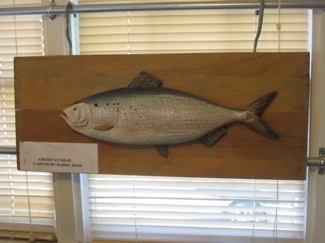
Do you doubt the importance of the Shad Derby? Don’t. The Shad Derby is a long standing tradition in Windsor. It is not just one festival day. No, it is a full season-long series of activities culminating in the highly anticipated Shad Derby Parade! Heck, there’s even a Shad Derby Queen every year. I used to dream of dating a Shad Derby Queen… Sigh. I even found a monument dedicated to the shad in Windsor and made the effort to snap a picture of it on a terribly rainy day:
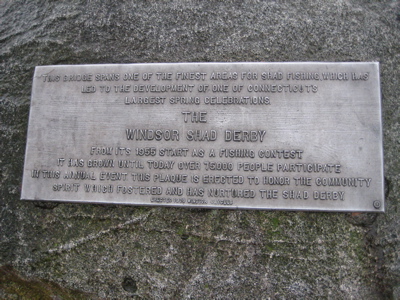
So what is it about shad and why are they so important to Connecticut – or more specifically, to Haddam? Shad has been harvested in Haddam since its founding in 1662 and from 1760 through the 19th century was a successful commercial enterprise. Shad fishing in Haddam was said to “be an industry of much profit and importance.” In 1814 there were at least 17 locations in town where shad were caught and that year saw a catch of 200,000. Over most of the history or shad fishing, it was done by ‘haul seining’ during the daytime but this practice stopped in the 1950’s when the fish became less numerous and the river travel increased.
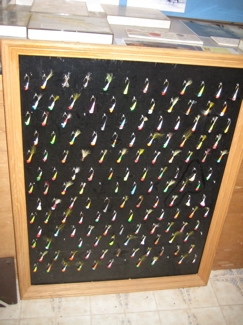
So the state put some tough regulations on shad fishing, which combined with the depleted population, nearly decimated the industry. Shad fishing now is done by law at night with ‘drift nets.’ Fishermen found different work and the roadside shad shacks all but disappeared. To my knowledge, only two remain… One, Maynard’s, has been converted into the Haddam Shad Museum and the other is wasting away up Route 154, succumbing to the weeds and junk overtaking it.
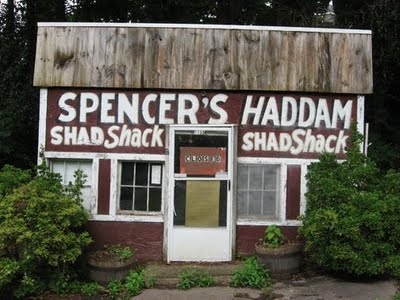
Some volunteers are trying to restore Spencer’s in 2019 and beyond.
That one is called Spencer’s Shad Shack and I don’t think they open up each year anymore… but maybe they do. I took some pictures of it a while back while hiking a section of the Mattabesett Trail, but can’t find them right now. So instead, I’ll borrow one from the Eccentric Roadside blog. Their pictures were taken several years ago, as it looks much worse today. Trust me.
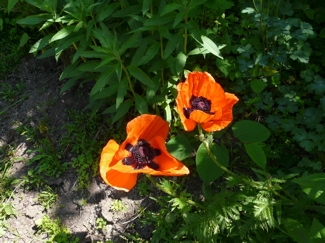
There’s one more bit of background I need to mention before we get to the actual museum. A couple years ago I gathered together my list of defunct museums around the state. I don’t know how it happened, but I listed this place as “closed.” As a result, I received emails from one Dick Hemenway and the museum’s Dr. Joseph Zaientz setting me straight. They were both (justifiably) upset that I declared the museum dead – and I quickly redacted my error. And so began a long online friendship with Mr. Hemenway and an eternal fascination with the Shad Museum.
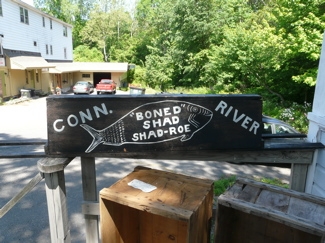
Did my little website carry weight? People actually read this thing and what I write here actually matters? Wow, I was shocked and humbled. I guess from that point forward I started caring a little bit more about those pesky things called “facts.” (Though I will never proclaim that CTMQ is the arbiter of all things factual. That’s a fact.)
My original erroneous post was titled, “Sho, Sho Shad” and I borrowed heavily from Mr. Hemenway’s piece about the Shad Museum on the state’s CT Kids website – which now endorses CTMQ. It’s a shame I can’t use that wonderful title and was forced to use the strained pun instead. Oh well. I will be borrowing heavily from Mr. Hemenway’s piece again though because, well, when you have hundreds of museums to visit and write about, sometimes it’s best to recognize good writing when you see it.
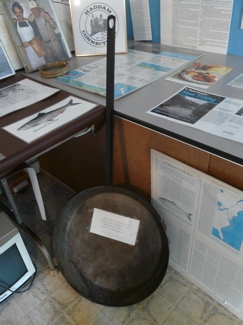
For instance, Hemenway writes,
Are big museums with hundreds of exhibits on hundreds of topics sometimes hard to get through, confusing and tiring? If so, then the Haddam Shad Museum is the perfect place for you to visit. This small museum, with its single focus – shad – does not have any interactive exhibits or electronic learning modules, or theater presentations, but it is filled with the rich heritage of shad fishing on the Connecticut River. You could see most of the exhibits in about twenty minutes, or you could spend hours listening to stories of shad fishing and fisherman, foggy nights on the river, boats and floats, nets and splices, danger and reward, courage and determination, fish and friends and shad.
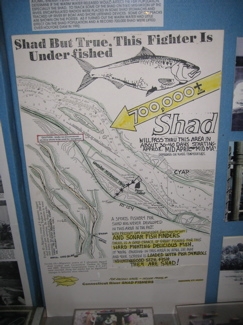
Yeah, that’s good… And spot on. I’ve come to love these little singularly focused and some would say quirky museums, precisely for the above reasons. Of course, I visit some of these with Damian so the hours of engaging conversation becomes impossible.
Now that that’s all out of the way, we can properly visit the Shad Museum. And the only truly proper way to do it is to bring along two very important people in my life: Hoang and Damian. No, no… That’s not enough. I drag those two to all sorts of museums… And so, for this momentous event, we were joined by my mom and dad! CTMQ Dad has appeared on the blog before at the CRRA Trash Museum in Hartford) but the Shad Museum marks CTMQ Mom’s debut. I can’t think of a better place.
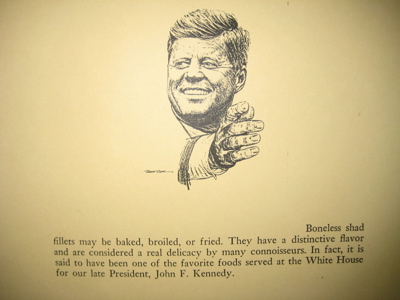
Growing up, one of my dad’s favorite dishes was shad roe. My mom would fry it up in butter with some bacon and maybe some onions and we’d sit there and gag while my dad would chow down on millions of shad eggs. In a sac. Little did I know that some years later I’d end up working at a very popular seafood destination store and even tried my hand at boning shad and removing the roe. Boning shad was and is today considered an art form. It’s darn near impossible to do and is probably one of the hardest foods to prepare from a whole fish. Trust me. (The dang fish has about 1000 bones.)
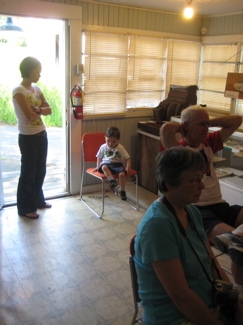
I had tried to visit the museum before, but it never seemed to work out. The museum’s owner, director, proprietor, docent, curator and keeper is Dr. Joseph R Zaientz, a retired dentist and observant Jew. Therefore, Saturdays are out. And the Sunday hours just never seemed to work for me. But who cares, I was going to show off one of Connecticut’s gems to my parents now, so I was glad I hadn’t visited before.
The museum is a little hard to find, tucked away behind a gas station and some office buildings. Once there, my mom was taken by the beautiful flowers seeming to be growing wild in the parking lot. As she took pictures of them, I noticed Dr. Zaientz ambling down the steep driveway with a decided limp (the result of a motorcycle crash years ago) and a smile. This was gonna be good.
We were greeted warmly and Dr. Zaientz didn’t seem to skip a beat when he realized there were five people (plus one Damian) visiting his small museum. And two of them (my parents) were all the way up from Delaware! Turns out, this wasn’t so exciting to him… The Shad Museum attracts visitors far and wide.
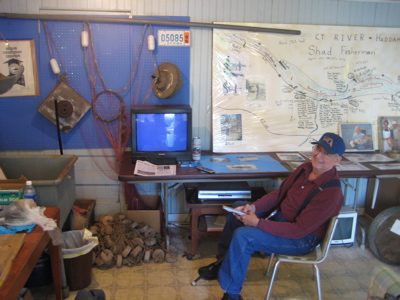
Dr. Zaientz
Before entering we stopped at the boat outside the entrance. This was a Brockway Scow, a light, stable, easily maneuvered, inexpensive boat made for shad fishing by Earl Brockway of Old Saybrook.
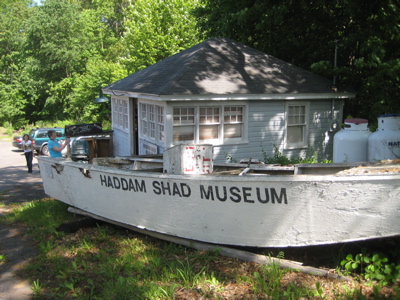
This is not a large museum. No, in fact, it’s teeny. Hoang may even have called it cute, I’m not sure. But it was chock full of shad related stuff. Shad this and shad that. Shad lures, shad nets, shad pictures, shad recipes, shad fishing maps, shad morphology charts, shad books, shad posters. I was in shad heaven.
While I snapped pictures for this blog, my dad and Dr. Zaientz began talking about shad and the history of shad fishing in Connecticut. My mom politely poked about. She’s the best.
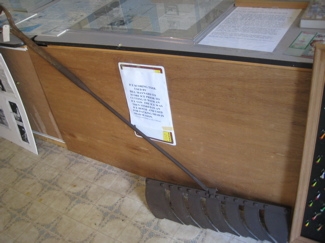
Time to borrow again from Hemenway’s write up:
Dr. Zaientz’s talk drifted like his beloved Brockway Scow, meandering from point to point, sometimes catching an eddy and returning briefly to a previous point, sometimes swept by the rapids of emotion and running on for awhile, sometimes lingering in a quiet backwater of remembrance, but always pursuing the elusive shad. I drifted with him while names of places and people and things rose to the surface like bits of flotsam on the river – Bill Maynard, Higganum Reach, George Bernard, Seine Nets, Gill Nets, Dan Russell, Hubie Spencer, Dorothy Goss, the Nosal Boys, Whitney Brooks, boning, setting and hauling, dams, Doc Driscoll, Haddam Reach, and many more than I could ever remember.
Exactly. It was great. My dad and I asked several questions and each answer led into other answers to unasked questions. This is a result of Dr. Zaientz’s love of shad lore rather than any sort of loose neurons. And I love meeting people who love random things. Like shad.
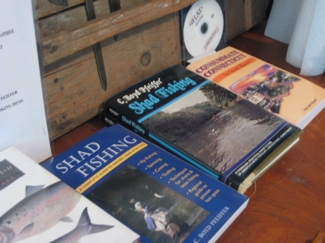
We were even treated to a little video about shad fishing. Grainy and worn, we learned about the rigors of the trade and how it was a rather difficult living even back when there were tons of the fish in the rivers. Dr. Zaientz sat and watched it patiently with us – probably for the 900th time. He had plenty of other shad videos to watch, but we deferred.
I asked to learn a little bit more about the building we were in and learned that Bill Maynard used to be the king of Haddam shad fishing. Bill had many business ventures, and among them was catching shad and selling them out of a fishing shack along the main street of Haddam. Dr. Zaientz restored the shad shack in 1997-98, and made it into a museum to preserve the history of shad fishing in Connecticut.
It’s great to know that it has been preserved as a museum.
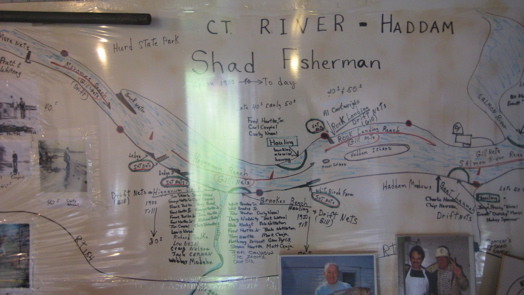
Okay, so that’s the museum… But how and why did the shad become our state fish? There hangs in the museum a letter to the general assembly arguing for the designation. It is an impassioned plea to recognize the shad. Unfortunately, it states many things but (due to space constraints), doesn’t really back up what it claims. After ripping through a list of pretenders to the Connecticut fish throne, the letter then explains there is only one true Connecticut state fish: The shad.
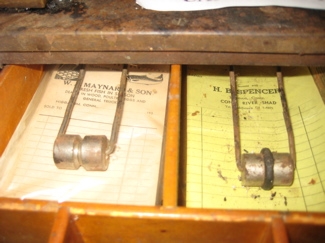
American shad in Connecticut have a tremendous value as a sport fish and commercial food fish. Historically shad have been an important part of American history… Our state is more unique in shad history than any other state. The superior quality of our shad, because of the condition in our Connecticut River estuary is unmatched anywhere. The ability to debone shad fillets that was developed and refined here is world renowned. Our shad are known in the culinary world as a gourmet’s delight, and the roe is revered as the fois gras of the seafood world. No other state is associated with shad as much as Connecticut is.
I won’t quibble with the fois gras comparison, even if I’ve heard that monkfish liver is truly the fois gras of the seafood world. The plea goes on to discuss the deliciousness and healthiness of eating shad. Also, most importantly, it gives numbers of shad in 2002 which signals a huge comeback for the once beleaguered fish.
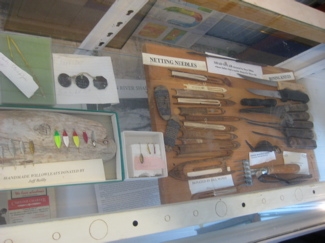
Anyway, some quick history of the trials and tribulations of shad in the region: In the Connecticut River, American shad were important to the indigenous peoples of the area and likewise comprised a large proportion of settlers’ diets. Some of the best fishing areas were deemed neutral territories for local tribes and during the spawning run hundreds of people would congregate in these areas to spear and net migrating fish. However, the industrial revolution, and the building of river dams, drastically reduced the number of shad, and other migratory fish, in the river. A large dam was built in 1798 at Turners Falls and this dam eliminated all spawning habitat for shad beyond 120 miles upriver. The dam at South Hadley Falls in Holyoke, constructed in 1849, severely restricted the shad’s spawning habitat to the lower 87 miles of the river. Finally, in 1880 the habitat was further restricted by the construction of a low-head dam at Enfield Falls in Enfield, CT. Following this construction, shad were limited to the lower 68 miles of the river during periods of low water. While spawning habitat was not completely eradicated by these manmade obstacles, the population was drastically reduced by these intrusions. Subsequently, however, changes in legislation and in public opinion focused attention on the problem and placed the responsibility for fish passage on the owners of the dams.
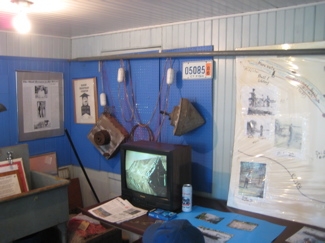
And ever wonder why the shadbush is called the shadbush? Beginning in March or April, shad congregate in the bays, sounds, and estuaries below their natal rivers, adjusting their physiology from salt- to fresh water. Then, about the same time as the shadbush blooms, they stop eating and move en masse upstream, sometimes traveling hundreds of miles before spawning. Not all shad die after spawning, instead returning downstream to the ocean where the cycle may begin again. So yes, the shadbush got its name because it signaled the shad migration up river. Cool.
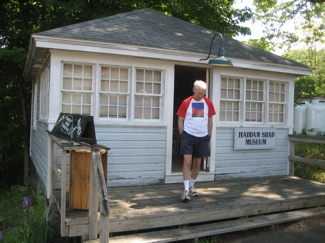
And finally, instead of ending this post with my usual pithy comments, I turn once again to Dick Hemenway who, although his name evokes a certain obvious American literary icon, found his inner Joseph Conrad for his conclusion. A conclusion which, you’ll conclude, is far better than any I’ve ever written.
Back in the car, I headed north, but, perhaps hesitant to end my shad adventure, I turned into a side road that looked like it also might lead down to the river. The road twisted and turned, and then came to a point where it dipped sharply down and to the left. Ahead was a panoramic view of the river through the still leafless, dark trees. I parked the car and got out to stand looking at the scene of almost wintry bleakness before me.
The gray river, swollen and fast from several days of rain, seemed to press down upon the upper branches of the trees under the gray sky, flowing through them from one large gap in the branches down to the next and the next, rising above the banks like the tea in a cup you fill almost to overflowing; unchanging yet ever changing, ancient yet ever young, immovable yet ever moving, unstoppable yet ever stopping, placid yet ever turbulent, immense and timeless yet the embodiment of time itself, deep and patient and waiting. Soon the shad would come.
I’ve gotta meet this guy someday!

![]()

 ron says
ron says
January 20, 2010 at 9:37 pmNJN, NJ’s PBS network, runs NJN “classics” on their extra digital station and I watched this show from 1981 about the shad industry on the delaware and how there isnt one now. it was interesting yet depressing.
in a neighborhood in philadelphia they are now having a shad fest though since they are gradually coming back.
http://www.fishtownshadfest.org/
 Aunt Pat says
Aunt Pat says
January 23, 2010 at 3:44 pmGee, i remember eating shad as a kid in Delaware. Like you said, shad has a lot of little bones, a really bad fish to feed a kid. Kinda ruined me for fish until nearly adulthood. I recall an impass with your grandfather. I refused to finish my fish one night (probably because of the bones). My father threatened that I would have the shad for breakfast if I didn’t finish it then. Yuck, fish for breakfast! Who knew I would marry into lox and bagels!
 Steve says
Steve says
January 23, 2010 at 4:43 pmMore importantly, THIS is where I dragged your sister for her first CTMQ experience?! I’m awesome.
(Rest assured, we went to a much more mom-friendly place right down the road after this… Gillette’s Castle.)
Oh – and I married Vietnamese… How about fish sauce for breakfast.
 Laurie Tavino says
Laurie Tavino says
May 18, 2011 at 11:50 pmHello,
I have an old photo (early 1900s) that was taken along the Conn. River in Suffield. I only know of one person identified in it. I posted the photo in the paper and got no answers. I just found an article written about this person and it mentioned that his last job was working for the State of CT Dept of Wildlife at the Suffield station, processing shad roe for the hotel and food industry of the day. I believe this is a photo of that station which no longer exists. Can you tell me where I might find the archives of this department? Who I can contact? Thank you
 Steve says
Steve says
May 19, 2011 at 10:56 amLaurie,
I (the writer of this site) have no idea. I’ve never even seen a live shad in my life I don’t think. Sorry.
 Steve Link says
Steve Link says
April 26, 2015 at 7:09 amGreat stories. I drove one of Hubie Spencer’s ice cream trucks one summer. I see reference to George Bernard. Is that a classmate of mine, George Bernard Shaw who went on the TV quiz show…
The Name’s The Same – February 2, 1954
Gene Rayburn, Alexander, Stern, Lewis
1. “Dean Martin & Jerry Lewis”
2. “Will Hug”
3. Merle Oberon (Guest) “I would like to be served breakfast in bed for the rest of my life.”
4. “George Bernard Shaw”
(0053)
 Johnny Anonymous says
Johnny Anonymous says
December 28, 2020 at 3:23 pmThe Shad Museum is on hiatus as of Dec. 2020.